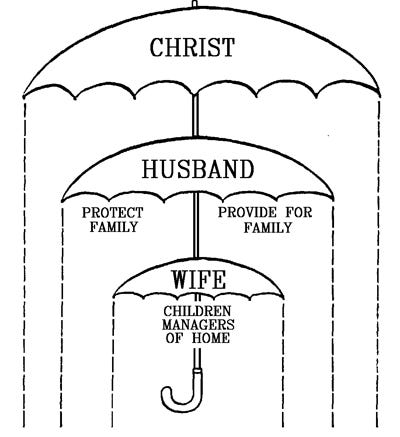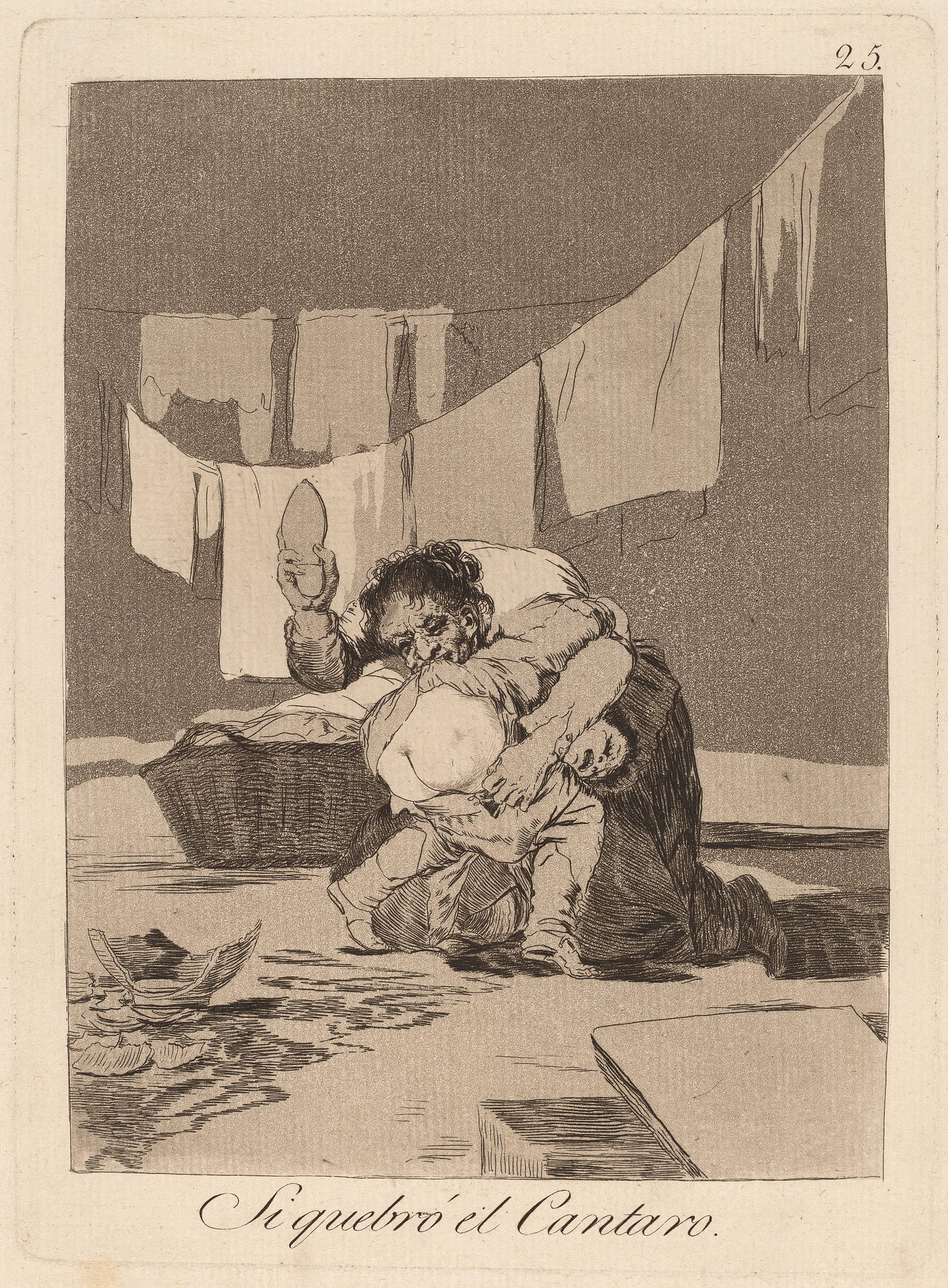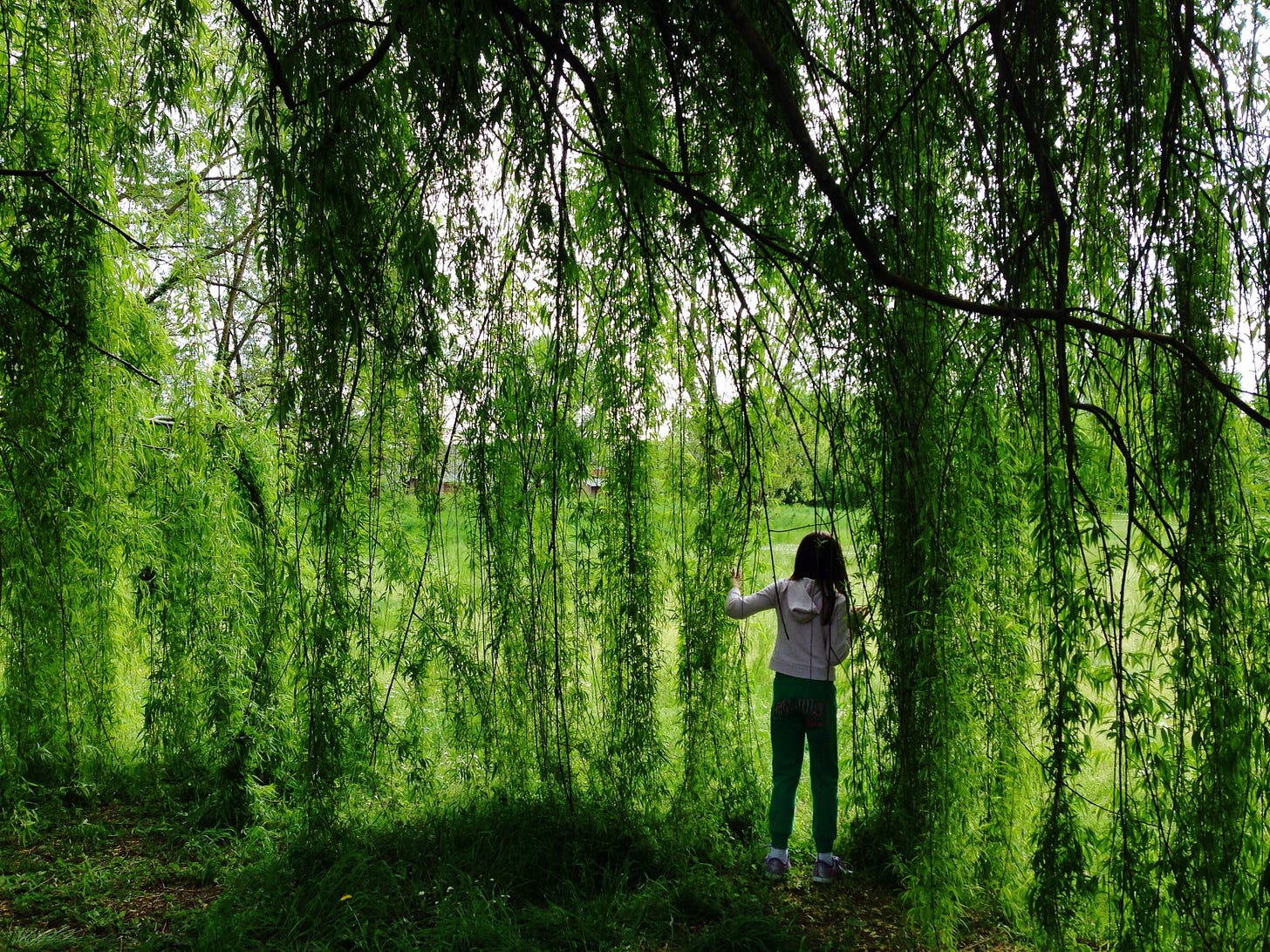The response to the first installment of this series exceeded every expectation I had. Many readers felt moved to share painful aspects of their childhoods, for which I continue to feel enormous gratitude. One of the privileges of being an independent journalist is that I am not bound by convention to present opposing sides in tandem—not required, in this case, to neutrally present the equivocations of those who professionally advocate for striking children. What I have learned, however, is that many people who advocate physically hurting children are happy to do so for free, and entirely unasked.
I am not in the business of telling strangers what, in their own lives, constitutes abuse; that is best determined through painstaking self-examination. Roughly half the country approves of corporal punishment, among the secular and religious, the rich and the poor, the urban and rural, and across racial lines.
That being said, I will make my position clear from the outset: I believe striking children is a profound moral wrong, and offers no help, but only harm. In this conviction I am joined by such groups as the American Psychological Association and the American Academy of Pediatrics, on the basis of half a century of research. Many parents who love their children feel duty-bound to strike them. If as a result of this work one fewer blow falls in one fewer nursery, it will have more than served its purpose.
—Talia Lavin, November 1, 2021
Where do the inner maps that guide us through life originate? This emotional cartography is drawn from our earliest memories, and carves grooves of nerve and sinew that lead our steps for the rest of our days. The landscape can be sunny or forbidding, depending on what we’ve experienced—it can lead us toward love, or toward pain.
In Dare to Discipline, the evangelical patriarch James Dobson recounts an anecdote that appears both foundational to his parenting approach and deeply Freudian. The day, he writes, “shines like a neon light in my mind”: he had sassed his mother, she reached out to grab the nearest object, and her hand landed on a girdle. “Those were the days when a girdle was lined with rivets and mysterious panels. She drew back and swung that abominable garment in my direction, and I can still hear it whistling through the air. The intended blow caught me across the chest, followed by a multitude of straps and buckles, wrapping themselves around my midsection. She gave me an entire thrashing with one blow!” It was the last time he sassed her, he says, though he has shared that story “many times through the years” on his way to becoming one of America’s foremost proponents of corporal punishment in the home.
“There's something about being beaten in such a religious, ritualistic, intimate way that feels almost sexual, even if it's not intended as such,” says Heather, 40, one of the many women who reached out to me for this series. “Child me picked up on that too, and started having sensual feelings about it. And felt extremely guilty for that, and wanted it to stop, but those thoughts intruded in my head. So much that I asked God to kill me. He didn't.”
What does it feel like to be struck as a child? Children feel pain, as any human being does; there is no stage of development at which nerve endings are less sensitive, at which the hot and ancient wires that connect pain to fear and fear to survival are unformed. To be struck as a child is to experience pain and fear.
To be struck as a child by your parent is to experience a different kind of pain entirely, an inextricable entanglement of emotional and physical suffering. It is a violative and bewildering moment, and the lessons it imparts are rarely those the parent sought to convey—to go to bed on time, to refrain from sibling conflict, to get better grades. Memories of the infraction fade, but a sense of betrayal lingers, as well as the sense that love and pain flow from the same font; that the child, through his or her fundamental flaws, provoked the violence they endured from their idolized parent.
Many of the Evangelical parenting authors I have read for this series declare that after inflicting physical pain, the parent must declare that “the slate is clean”—that the sin has been forgiven, and parental opprobrium with it. But in the body and the mind of the child, the nerves themselves sing against tabula rasa. The pain you carry in your body as a child grows with you; it changes how you see love, how you see violence, how you see yourself in relation to the two. The parents of my correspondents may not remember administering these beatings, or may justify them still. As one African proverb puts it: “The axe forgets, but the tree remembers.” My inbox is full—bursting—with memory: I remember… I remember… I remember my father … my mother… My inbox is full of beatings experienced now as vividly as they were at four, at seven, at twelve.
“At the Base of the Back, Above the Thighs”
In the mid-1970s, Larry Tomczak, a charismatic, clean-cut neo-Calvinist pastor, met a peripatetic, long-haired “Jesus freak” named C.J. Mahaney in Washington D.C. Both Tomczak and Mahaney shared a love of impassioned worship, filled with music and speaking in tongues. They began to collaborate on Sunday services, and, in 1982, founded Sovereign Grace Ministries, a new evangelical denomination whose adherents sought to “live by every word that comes from the mouth of God.” Sovereign Grace would eventually encompass some 100 churches and 28,000 adherents.
In the same year Sovereign Grace Ministries was founded, Tomczak published his first book, a manual on Biblical parenting. It was called God, the Rod, and Your Child’s Bod: the Art of Loving Correction for Christian Parents. The book was pushed on church parents, and formed a crucial pillar of an approach to child-rearing that emphasized immediate and unquestioning obedience, encouraged homeschooling, and focused heavily on the innate sinfulness of members of all ages.
In 2012, eleven plaintiffs filed a lawsuit against Sovereign Grace Ministries, alleging that church leaders had carefully orchestrated a wide-ranging coverup of child molestation and abuse throughout the 1980s and 1990s. A woman using the pseudonym “Carla Coe” alleged that Tomczak had imprisoned and starved her over a 25-year period extending from her childhood to her early adulthood.
“On multiple occasions, including occasions after Carla Coe reached the age of majority, Defendant Tomczak forced Carla Coe to strip out of her clothing against her will, and be beaten on her bare buttocks,” the complaint read. “Defendant Tomczak continued to engage in this forced undressing and beating of Carla Coe until she fled and escaped from the abuse.” The lawsuit was dismissed in 2013, on the grounds that all but two of the plaintiffs had exceeded the statute of limitations for child sex abuse cases. No court ever examined the truth of the allegations; Tomczak denies them.
“Where should the rod be administered?” asked Tomczak in God, the Rod and Your Child’s Bod. “God, in his wisdom, prepared a strategic place on our children’s anatomy which has enough cushiony, fatty tissue and sensitive nerve endings to respond to Spirit-led stimulation. The area is on the base of the back, above the thighs, located directly on the backside of every child. All children come equipped with one!”
“Corporal punishment is inherently sexual because it involves ritualized contact with sexual organs,” Katherine Mitchell, 32, told me. “Every position I was put into as a child to be hit is also a sexual position that adults use. The muscle memory is still very linked and there are times that my partner and I have to stop interacting because I am having a flashback.”
Throughout this series, I have resisted using the word “spanking” unless directly quoting a source. This is mostly because I find the term euphemistic—it is an all-too-cute word for striking a child with the intent of causing pain. But the other reason is that spanking is, in the adult world, an exclusively sexual term. Well-administered slaps on the ass can add fervor to foreplay; in the context of kink, slapping can be only a start, and sex, for some fervent fetishists, an amuse-bouche compared to the act of erotic punishment. On Amazon and Etsy, a search for “spanking paddles” conjures an array of items, some overtly fetishistic—black leather, embossed red hearts—and some clearly designed for hurting children. The helpful, algorithmically-assisted autofill adds two options to guide your “spanking paddle” search: the first is “spanking paddle for sex,” and the second is “spanking paddle for kids.”
Among adults, spanking is either consensual and thrilling, or nonconsensual and abusive—a crime of sexual battery. By contrast: In many of the states in which some 100,000 schoolchildren are subject to legal corporal punishment each year, parents must sign consent forms signaling their willingness to have their children spanked by strangers, with hands or wooden paddles—absent the child’s input about their own body. (It is easily surmised that a child whose parents consent to such punishment will not find respite from it at home, or anywhere else.)
Adult spanking and child spanking are fundamentally the same act—the deliberate infliction of pain to the buttocks—but socially, they are worlds apart. Because spanking is so common in American households, this aspect of corporal punishment is rarely discussed. But for some children, it becomes a lifelong source of sexual disquiet.
The author Jillian Keenan, a self-confessed spanking fetishist, writes in her memoir Sex With Shakespeare: Here’s Much to Do With Pain and More With Love, that given her proclivities, vicious spankings by her unstable mother felt to her like a profound sexual violation. Memories of being spanked with a hairbrush caused her, many years later, to vomit violently at the recollection. Parents may not intend to sexually harm their children through spanking, but that, Keenan argues, doesn’t matter when compared to its effects. Moreover, with regards to that intent, she asks: “Are you sure? … How much would you gamble on that certainty?”
There’s an unmistakable sensuality, even a certain lasciviousness, with which the authors of these parenting manuals fixate on the physical aspects of Godly punishment, whose locus is the buttocks. This can lead to passages that read somewhere between comical and horrifying, particularly given the endless repetition of the word “rod.” “The rod is somewhat of a mystery in how it works,” writes Ginger Hubbard in Don’t Make Me Count to Three! A Mom’s Look At Heart-Oriented Discipline, “but we can be confident that while we are obeying God and working on the buttocks, God is honoring our obedience and working on the heart.” Both Roy Lessin (author of three separate books on childrearing, including Spanking: A Loving Discipline and Spanking: When, Why, How?) and J. Richard Fugate (author of What the Bible Says About… Child Training) specify prescribed positions for children to take during the administration of blows. Fugate, who went on to lead two separate Christian home-schooling curriculum companies, suggests “over your lap for a one-year-old, laying on the bed for a two-to-four-year-old, or bent over holding the ankles for older children.”
Most of the people who wrote to me for this series experienced corporal punishment as a physical and psychological violation—as violence, and as emotional pain. But some had more to say. For girls raised in an evangelical culture with a primary focus on modesty and purity, the prospect of having to strip bare before their fathers to be struck was humiliating, a source of profound shame and discomfort.
The Sword and the Sandwich is a newsletter about serious extremism and equally serious sandwiches. Please consider supporting this work with a paid subscription:
Liz Van Noggeren, 46, recalled the sexualized humiliation of one specific beating. “I don’t know what precipitated this particular assault. What I remember is being taken down the basement and my Dad grabbing an old 2x4 and beating me across the ass with it,” she said. “The rough edges and the nail heads in the old wood made a bloody mess of me, despite my clothes. Afterwards, once he’d calmed down, he had me lay on my tummy on my bed and exposed my bare ass and spread ointment on the bruised and bloody skin. I couldn’t sit in a chair for some time, but the revulsion of him touching my bare ass when I was 11 or 12 years old stayed with me far longer.”
For other respondents, the connections were more vivid, even from an early age. Amelia, 30, recalled that being forced to strip created guilt and confusion—an extreme form of immodesty.
“I had separately ‘figured out’ masturbation as a toddler (obviously without knowing what it was), and would often use it to self-soothe before and after getting spanked,” she wrote. “The combination of authority figures forcing me to get naked and endure pain; blood rushing to the general area from the spanking itself; and masturbating afterwards to calm down created early connections between shame, pain, and sexual pleasure that were definitely inappropriate. I don't remember how early it was, but I know it was before the age of 6. As an adult, I believe corporal punishment is virtually always physical abuse and often sexual abuse as well.”
The buttocks and genitals are anatomically very close to one another, and the percussive contact of a hand or a paddle causes a flush of blood to the region. The same blood courses down the same, bifurcated artery during arousal. As Keenan puts it in her memoir: “Children have emerging sexual identities. And if even 1 percent of them perceive spanking as a sex act, we are violating too many kids.”
“Pick Your Own Switch”
When she was very young, Joy remembers, her parents often sent her to the patch of weeping willows beside her home. There, she was instructed to pick her own switch—a short length of willow that would be used to beat her. When she grew older, plastic hangers and dowel rods from Home Depot were the tools of choice, but in her youngest years, she was made to participate in the ritual of her own punishment.
Joy ultimately left home at 17, winding up with a man 12 years her senior, who strangled her, beat her, and attempted to throw her out of a moving car. “I was denied autonomy, told I was evil and defiant, isolated from the world, denied friends, told I was an abomination, and beaten daily for at least 12 years of my life,” she says of her upbringing. When it came to finding a partner, “I did not know what love was supposed to feel like, I didn't know what safety or security felt like, and I found myself in abusive relationship after abusive relationship.”
Dr. Patrick Carnes, founder of the International Institute For Trauma and Addiction Professionals, coined the term “trauma bond” in 1997, in his book The Betrayal Bond: Breaking Free of Exploitative Relationships. It’s a new term for an ancient phenomenon: “attachments that occur in the presence of danger, shame or exploitation.” According to Carnes, the condition of the trauma bond is to feel “at the same time deeply cared for and deeply afraid”: it is present in both abusive childhoods and in abusive romantic relationships, and stems from the alternation of loving and violent behaviors. A young child cannot flee their parent; the inner paths formed in early years become the emotional geography of a lifetime.
“Early attachment patterns create the inner maps that chart our relationships throughout life,” writes Bessel Van Der Kolk in his groundbreaking work The Body Keeps the Score: Brain, Mind and Body in the Healing of Trauma. “Our relationship maps are implicit, etched into the emotional brain.” The carefully performed infliction of physical pain, followed by declarations of love and gentle touch, is a concretization of the trauma bond, an indelible crevasse in one’s emotional topography. Under these guidelines, the source of love and the source of pain—of hope, comfort and intimacy, as well as physical punishment—are definitionally the same. It is a lesson that can echo down the corridors of a life.
Many fundamentalist Christian parenting guides lay out a stark vision of children, one in which only strict punishment can lead to salvation. The author J. Richard Fugate—whose popular 1980 book What the Bible Says About… Child Training offers a sampler of recommended beating implements for children from ages 1 to 20, starting with the “Tot Rod,” (a 3/16” x 24” dowel rod)—describes children as “sinful, dirty and selfish.” They are born, he writes, in a state of “spiritual death.” The shocked look and tears of the baby, Fugate writes, will indicate that you have gotten his attention. Obedience must be externally imposed, and physical pain is the only means to make a child truly accept parental direction—a condition with existential stakes for their very soul.
Alice, 38, was beaten on a weekly basis with wooden spoons and spatulas until she was twelve. She was told it was the only measure that could correct her innate sinfulness.
“I stayed with one guy who would throw me around when I ‘acted wrong,’” she says. “I knew it wasn’t right, but I couldn’t articulate what wasn’t right about it. I was so used to being punished for my wrongness that he just sort of fit the pattern. I only left after he raped me.”
Jay, 28, was beaten with paint stirrers and a 2x4 with a handle shaped like the top of a picket fence. After her father beat her, he would tell her he loved her; he made her say she loved him back.
“I was in an abusive marriage for years because I believed I deserved to be hurt by figures of authority,” she said. “I thought it was making me a better person or keeping me safe from myself somehow. That's inextricably linked to corporal punishment for me.”
In 2017, a landmark study of nearly 800 adults found that children who were spanked—even when controlling for severe abuse, the type doled out “in anger”—are more likely to be involved in violent romantic relationships, often as the aggressors. Other research suggests that violent experiences during childhood make people more prone to both perpetration and victimization of violence in romantic relationships. In each case, the wires that link pain and love have become soldered together, manifesting in either the instinct to violently dominate or an instinct to accept cruelty.
“Hearing my parents say over and over that they hit me because they love me, that they wouldn’t have broken that spoon across me if they didn’t love me, I have love and pain entangled in my psyche,” Sammy, 34, told me. She remained in an emotionally abusive marriage for ten years, she said, because her childhood had primed her to accept it. “I felt defective and unlovable because I was told by my mom during punishment sessions during my whole childhood that if I didn’t shape up my character and behavior, nobody would ever want me for a wife.”
They hit me because they love me bears a remarkable resemblance to the old domestic abuser’s credo you made me do it—the very existence of the child, or the lover, has provoked the violence. In many cases the violence begins before a child can walk or speak. Beatings are only to be administered in the case of “deliberate disobedience,” but often this stems from a look, a sigh, a hesitancy, a “defiant arching of the back”; the parent is to read the child like tea leaves, forever imputing malintent. For women in particular, who are raised in a church culture whose highest ideal for them is submission and obedience to the “headship” of a husband, the pressure to react to abuse with further submission and obedience is both internal and external. In Unholy Charade: Unmasking the Domestic Abuser in the Church, the pastor and author Jeff Crippen lays out a series of theological justifications for abuse. In particular, he singles out the idea of total and unquestioning submission to authority, as conveyed in the teachings of wildly popular (and sexually abusive) Christian homeschooling guru Bill Gothard, as a means to quell “rebellion” in women who are being abused. “Teachings like this, which strike fear into the heart of an obedient Christian,” Crippen writes, “can work to keep a victim in a domestically abusive situation far past the time when the situation has become intolerable for her and her children.”

Men face their own challenges in building healthy romantic relationships after childhoods of enduring corporal punishment. Both men and women who had avoided physically abusive relationships wrote to me of enduring struggles in building and maintaining emotional openness, hindered by fear that love and vulnerability would invite further pain.
“I believe my experiences of corporal punishment impacted the way I experience emotions. I can't be certain that's the cause but I am certain it didn't help,” says Jeremy, 37. “I have yet to have a successful romantic relationship with a woman; I'm not sure that I want one and I'm not sure I'm capable of experiencing love or romantic feelings.”
“I carry a paralyzing fear of screwing up, being less than perfect, having thoughts which I find immoral,” said Paul Rust, who grew up in the Franklin Baptist Church. “I find it extremely rare to feel safe in any environment, even my home.”
If an internal map is built on violence—with punishment and control its chief features, the peaks and troughs etched out in dominance and recrimination—the guidance it offers can lead to a similar landscape in adulthood. The compass points towards both pain and love, and they are found in the same direction, an inner north that pulls and pulls the pliant heart into the wastes.










I hope you're being supported as you're working on this series. It sounds like your inbox has been really intense recently. Thank you for your writing
Thank you for writing such incisive explorations of a deeply disturbing phenomenon/culture/industry.
All of these notions of how to raise children are so short-termist. The idea that a child could be damaged for decades, by this overlapping of parental love and physical attack, never even enters the equation. Only shutting them up right in that moment matters. A mindset that treats children as problems to be solved - that devalues their quality of life, that renders life itself a soulless ritual.